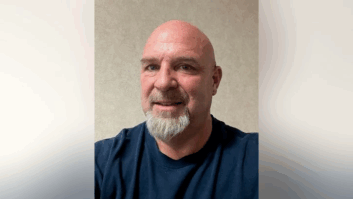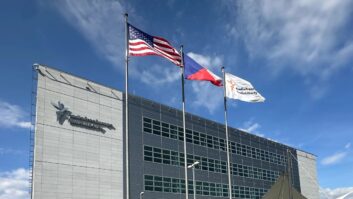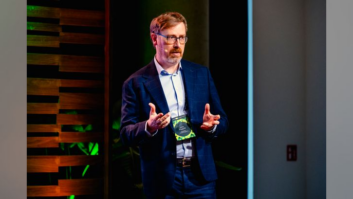The author wrote in July about “Why WWV and WWVH Still Matter.”
It may seem improbable that two radio stations that announce the time could end up being world-saving superheroes. But one day Colorado shortwave station WWV and its sister station WWVH in Hawaii may do just that.
The reason: If a massive solar coronal mass ejection from the sun ever supercharges the earth’s ionosphere, the resulting power surge would overload satellites and ground-based digital communications systems. The internet would be just one of the casualties: This planet’s unshielded electronics could be fried.
Actually, the right term is not “if” but “when.” In 1859, a massive solar flare hit the atmosphere; it was named the Carrington Event after UK astronomer Richard Carrington, who spotted the flare and deduced what was coming. The resulting nighttime auroras were so bright that sleeping miners in the Rocky Mountains woke up and made breakfast.
[Letter: “WWV Is Nice But Not All That Critical”]
At the time, telegraph networks in North America and Europe were the only electronics in widespread use, and the Carrington Event flare definitely affected them. The current induced into the telegraph wires was so strong that some operators received serious shocks. Others discovered that they could send and receive Morse Code over the network, without having to connect power sources to it.
In our modern world, a Carrington Event-sized solar storm “could lead to power loss for a period of weeks or more,” according to a 2013 analysis prepared by Lloyd’s of London and Atmospheric and Environmental Research.
“This would cause major disruption to transport, food supplies, emergency and hospital services … It is also likely that financial markets (especially as the financial sector is generally concentrated in the areas most at risk i.e. the northeast of the U.S.) could be significantly disrupted by a severe space weather event.”
When the next Carrington Event-sized solar storm hits the Earth, WWV and WWVH will step up to quell the chaos.
The reason: Not only do WWV and WWVH’s powerful shortwave radio signals easily cover North America and much of the world, but the facility has a generous supply of diesel standby generators, screened/shielded facilities to protect equipment from power surges and a robust, non-digital transmission infrastructure.
“Quite frankly, much of our equipment is tube-based analog technology,” said Glenn Nelson, an electronics technician at WWV and sister time code station WWVB. “This mean it is less vulnerable to power surges damage than digital equipment.”
With Assistance from MARS
WWV and WWVH won’t be the only superheroes working to bring order back to a world blasted by a solar storm (or a man-made electromagnetic pulse; either will do). The stations will be joined in their efforts by their partners in the Department of Defense Military Auxiliary Radio System. MARS members are amateur radio volunteers trained and certified to operate on DOD frequencies using military messaging protocols in order to communicate with the U.S. military.
MARS was established by DOD back in 1925, to enlist the help of hams during man-made and natural disasters, and to serve as trained pool of radio operators to support the military.
“It is always difficult to coordinate rescue officials and volunteers when there is a widespread communications breakdown, especially on the scale of a Carrington Event,” said Paul English, who runs the U.S. Army’s MARS program. “Hams will play a vital role in such emergencies gathering situational awareness information for the military on a county level,” he told Radio World. “They’ll tell us what’s the status of electricity, water and transportation, and we’ll compile that information on a national level to help guide the nation’s response.”

Using their powerful transmissions and broad coverage, WWV/WWVH will serve as central information hubs for MARS team members. The team will be packed with hams from across the United State, “who use their own equipment and donate their time to provide this service,” said amateur radio operator Cal Zethmayr (ham callsign W4GMH). WWV and WWVH’s broadcast will keep everyone on the same page and working together despite the chaos.
Getting Ready for Disaster
Mindful that solar storms can strike at any time, DOD holds MARS exercises on a regular basis. Since April 19, 2019, WWV/WWVH have been a part of this process, by announcing current and upcoming MARS exercises during their 24/7 time broadcasts.
“The WWV and WWVH announcements will provide information to Amateur Radio participants regarding the purpose, dates, times and locations of the exercises and other information,” states the WWV web site at www.nist.gov/pml/time-and-frequency-division/radio-stations/wwv.
“WWV will air MARS announcements on the 10th minute of each hour, and WWVH will use the 50th minute. The announcements will air for about two weeks, prior to and during each exercise.”
It is impossible to say when the next Carrington Event-level solar storm may hit our planet. It could be hundreds of years from now; it could be tomorrow. But when this storm does strike, the staff at WWV/WWVH and their MARS team members will be there to help quell the chaos. They’ll be real-life superheroes aiding the U.S. government in finding out which Americans urgently need help, so that it can be sent as soon as possible.
“When you look at today’s world where we are completely dependent on computer-controlled electronics in all aspects of our lives, a Carrington Event-sized coronal mass ejection could be devastating,” said English. “WWV, WWVH, and MARS will help us cope in such emergencies.”
Information about upcoming MARS exercises can be found at www.dodmars.org. Read about a recent exercise from the Army point of view here.







